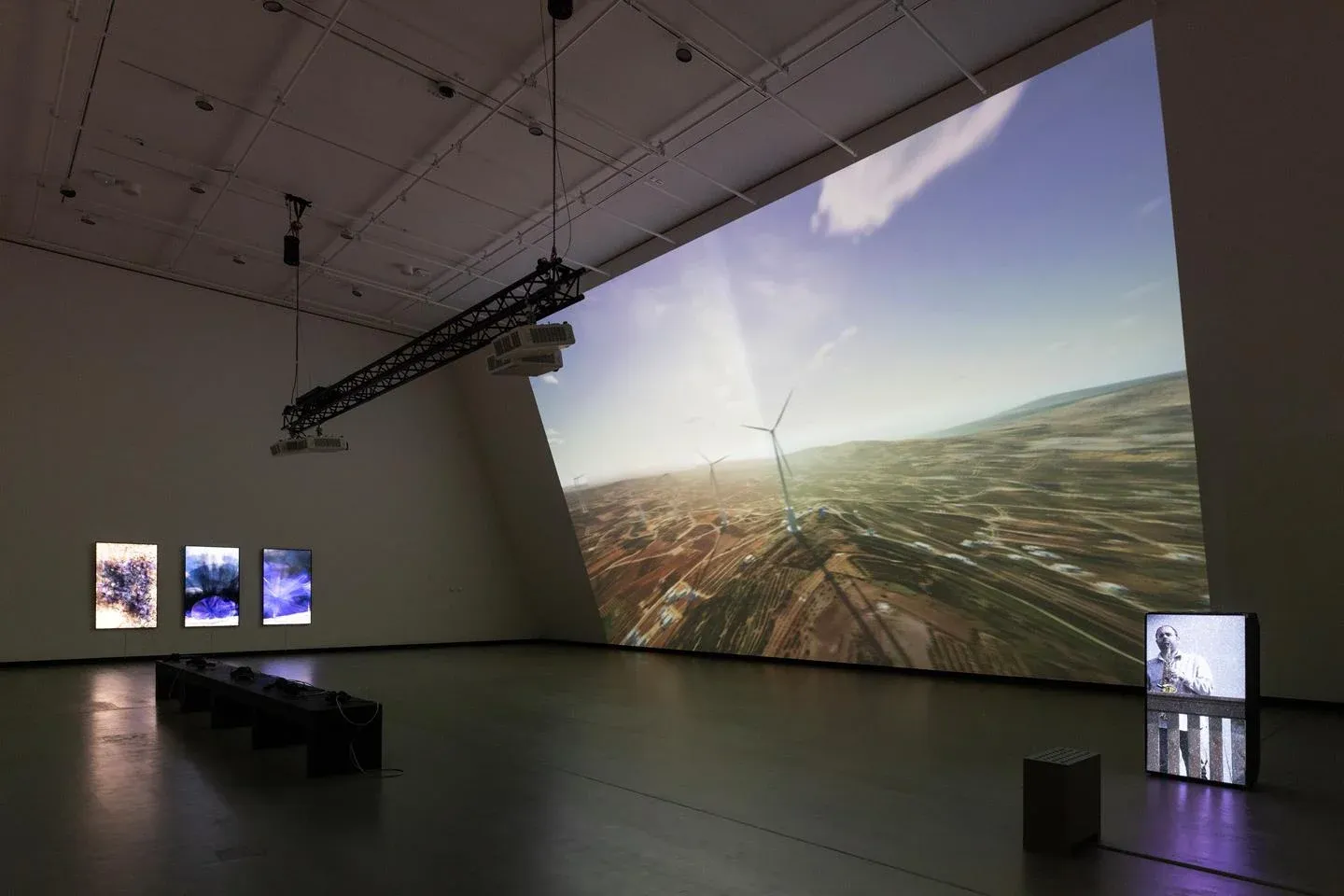EVENT: LAWRENCE ABU HAMDAN’S ZIFZAFA (SEPTEMBER 18 2025—JANUARY 4 2026, OSLO, NORWAY)

Lawrence Abu Hamdan’s Zifzafa
curated by Tominga O’Donnell
18 September 2025 — 4 January 2026
MUNCH Museum, Oslo — Floor 10 (Gallery 10)
Edvard Munchs plass 1, 0194 Oslo, Norway
Opening Hours: Sunday–Tuesday: 10:00 – 18:00 ; Wednesday–Saturday: 10:00 – 21:00
At the Munch Museum in Oslo, you don’t enter Lawrence Abu Hamdan’s new exhibition so much as tune into it. Long before reaching Gallery 10, the faint, wandering notes of a saxophone slip into the building’s tenth-floor promenade. Step inside, and the sound blooms into Zifzafa (2024–25), a work that treats noise as both evidence and weapon, celebration and erasure.
“Zifzafa”, an old Arabic word for a wind that rattles everything in its path, is Abu Hamdan’s response to Israel’s plan to install more than thirty wind turbines across the occupied Syrian Golan Heights. His chosen format is not the documentary nor the essay film, but the videogame. The centrepiece, Zifzafa: Livestream Audio Essay (2025), uses the familiar grammar of the online walkthrough—maps, avatars, live-chat overlays—to construct an interactive counter-archive of Jawlan’s fragile acoustic life.

Here the turbines are not abstract infrastructure but playable objects. Switch them on and the pastoral soundtrack of bees, children, and water pumps drowns beneath the mechanical roar. Switch them off and the memory of uncolonised sound flickers back into being. It is game logic as political allegory: toggling between worlds that can no longer coexist.
Other works orbit the simulation like satellites. Wind Ensemble (2024) projects saxophonist Amr Mdah onto the mesh of an amplifier, his balcony performance refracted into a shimmering, almost pixelated apparition. Across the room, Tilting at Windmills i–iii (2024) loops terse CGI animations, translating future noise pollution into cloud-like visual storms. Together, these pieces construct not a landscape but a soundscape under siege, where occupation is heard before it is seen.
Abu Hamdan, who once described himself as a “Private Ear,” here embraces the logics of game art: procedurality, spatial audio, open-source simulation. In Zifzafa, play becomes a forensic method. The walkthrough is less a guide for progress than a choreography of loss, teaching audiences how sound itself can be expropriated. The chat-box commentary, half Twitch banter, half legal testimony, scrolls alongside the action, weaving anecdotes about Jawlani weddings or apples with details about Israeli water seizures and corporate land grabs.

Curator Tominga O’Donnell frames the project as both art installation and urgent intervention. By staging the piece in a museum that has recently spotlighted Palestinian artists, MUNCH insists that cultural institutions remain spaces where simulation can stand in for testimony, and game engines can map forms of resistance.
For all its interactivity, the exhibition’s most haunting element might still be the faint saxophone drifting out of the gallery, an improvised melody that feels both joyous and funerary. Yet it is the playable simulation that crystallises Abu Hamdan’s wager: that videogame art can embody the politics of sound, turning a walk-through into a way of hearing what might soon be silenced.
Lawrence Abu Hamdan (b. 1985, Amman) is an artist and “Private Ear” whose practice explores the politics of listening. Working with sound as evidence, he investigates how voices, echoes, and ambient noise are weaponised in contexts of surveillance, occupation, and human rights abuses. His works take the form of video, audio essays, performances, and, most recently, interactive simulations. Abu Hamdan received the Edvard Munch Art Award in 2019 and was nominated for the Turner Prize. He is the founder of Earshot, a non-profit platform for audio investigations, and has exhibited internationally at major museums and biennials.
